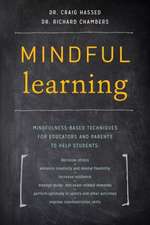Spatial Orientation: Theory, Research, and Application
Editat de Herbert Picken Limba Engleză Paperback – 18 feb 2012
Preț: 392.97 lei
Nou
Puncte Express: 589
Preț estimativ în valută:
75.20€ • 78.71$ • 62.59£
75.20€ • 78.71$ • 62.59£
Carte tipărită la comandă
Livrare economică 31 martie-14 aprilie
Preluare comenzi: 021 569.72.76
Specificații
ISBN-13: 9781461593270
ISBN-10: 1461593271
Pagini: 400
Ilustrații: XIV, 378 p.
Dimensiuni: 152 x 229 x 21 mm
Greutate: 0.53 kg
Ediția:Softcover reprint of the original 1st ed. 1983
Editura: Springer Us
Colecția Springer
Locul publicării:New York, NY, United States
ISBN-10: 1461593271
Pagini: 400
Ilustrații: XIV, 378 p.
Dimensiuni: 152 x 229 x 21 mm
Greutate: 0.53 kg
Ediția:Softcover reprint of the original 1st ed. 1983
Editura: Springer Us
Colecția Springer
Locul publicării:New York, NY, United States
Public țintă
ResearchCuprins
SECTION I COMPARATIVE AND DEVELOPMENTAL ASPECTS OF SPATIAL ORIENTATION.- 1. Spatial Orientation: A Comparative Approach.- 2. The Generation and Early Development of Spatial Inferences.- 3. Comparative and Developmental Approaches to Spatial Cognition.- SECTION II SPATIAL ORIENTATION AND SPECIAL POPULATIONS.- 4. Procedures for Defining and Analyzing Cognitive Maps of the Mildly and Moderately Mentally Retarded.- 5. Spatial Orientation in the Elderly: The Current Status of Understanding.- 6. Spatial Ability and the Limitations of Perceptual Systems.- 7. Spatial Orientation in Special Populations: The Mentally Retarded, The Blind, and The Elderly.- SECTION III MAP READING AND SPATIAL COGNITION.- 8. Terrain Visualization and Map Reading.- 9. Spatial Learning and Reasoning Skill.- 10. Map Reading and Spatial Cognition: Discussion.- SECTION IV LANGUAGE AND SPATIAL COGNITION.- 11. How Language Structures Space.- 12. Deixis and Spatial Orientation in Route Directions.- 13. Commentary on the Papers by Klein and Talmy.- SECTION V SPATIAL COGNITION AND INFORMATION PROCESSING.- 14. Modelling the Creation of Cognitive Maps.- 15. The Cognitive Map: Could It Have Been Any Other Way?.- 16. Concerning Cognitive Maps: Discussion of Baird and Kuipers.- Author Index.












